Abstract
1. The effects of plasmapheresis on the responses of rapidly adapting receptors (RARs) and slowly adapting receptors (SARs) of the airways to pulmonary venous congestion were examined in dogs anaesthetized with alpha-chloralose. Pulmonary venous congestion was produced in a graded manner by partial obstruction of the mitral valve sufficient to raise the mean left atrial pressure by 5, 10 and 15 mmHg. Plasmapheresis was performed by withdrawing 10% of blood volume twice. 2. Both RARs (n = 11) and SARs (n = 5) responded to pulmonary venous congestion by increasing their activities. The responses of the former were proportionately greater. 3. After plasmapheresis which reduced the concentration of plasma proteins by 12.3 +/- 1.0%, the responses of the RARs to pulmonary venous congestion were enhanced significantly. There was no significant change in the responses of SARs. 4. In another set of six RARs, the effects of graded pulmonary venous congestion were investigated twice with an interval of 45 min between the two observations. No significant differences were noted between the two responses. 5. Collection of lymph from the tracheobronchial lymph duct (n = 6) showed that after plasmapheresis, there was an increase in the control lymph flow. In addition, the lymph flow was enhanced during pulmonary venous congestion (mean left atrial pressure increased by 10 mmHg). 6. It is suggested that a natural stimulus for the excitation of the RAR is a function of the fluid fluxes in the pulmonary extravascular space.
Full text
PDF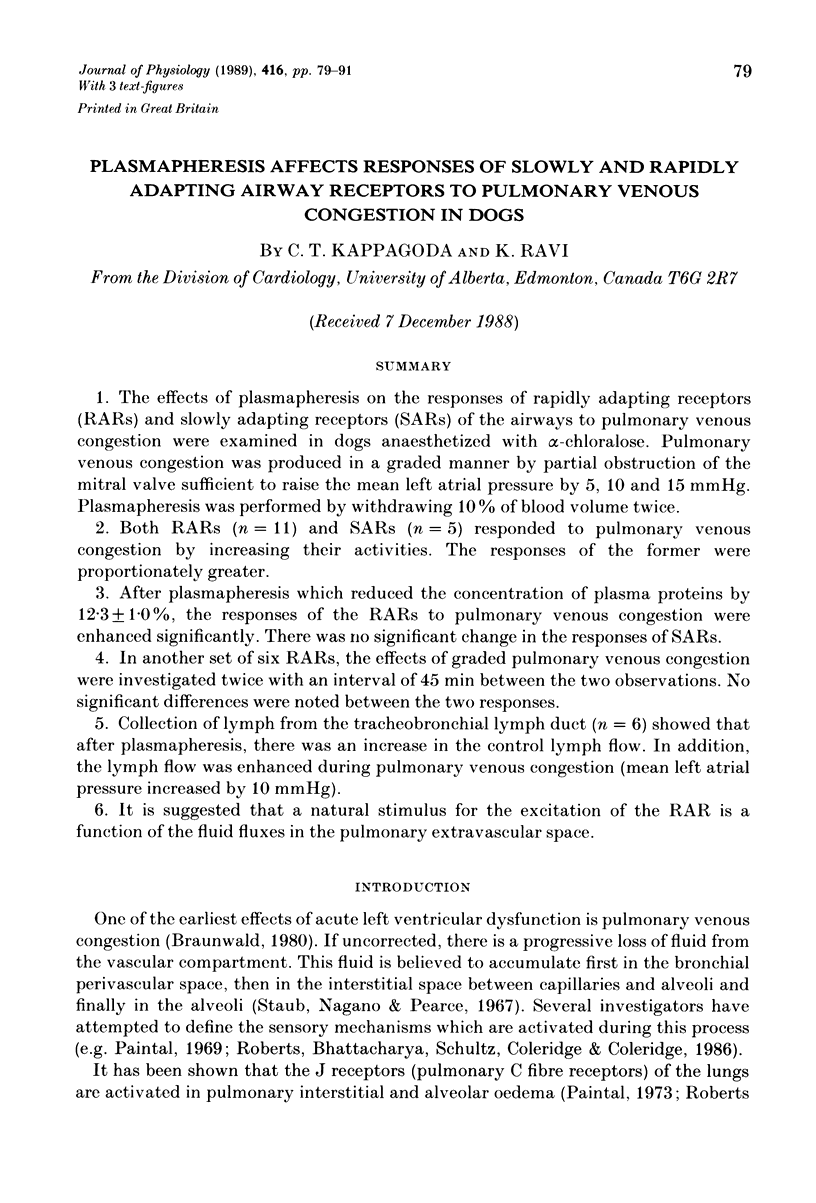
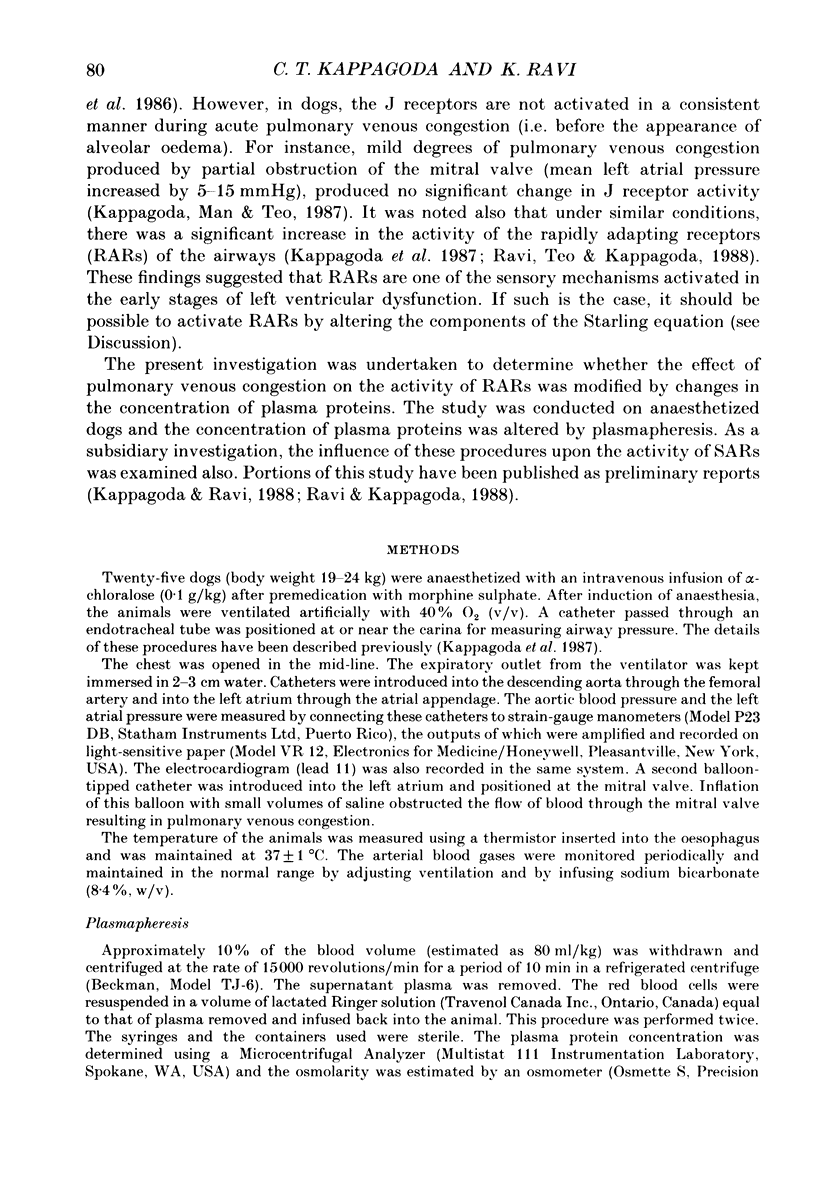
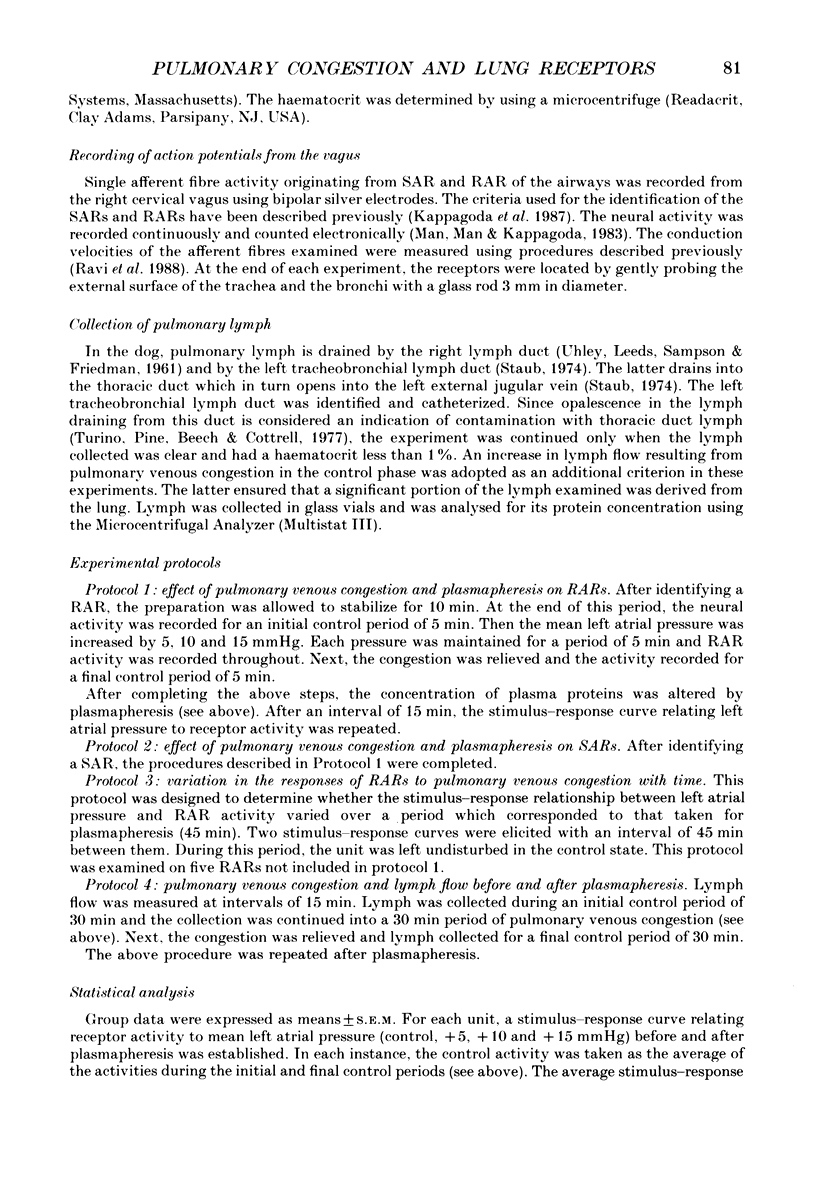
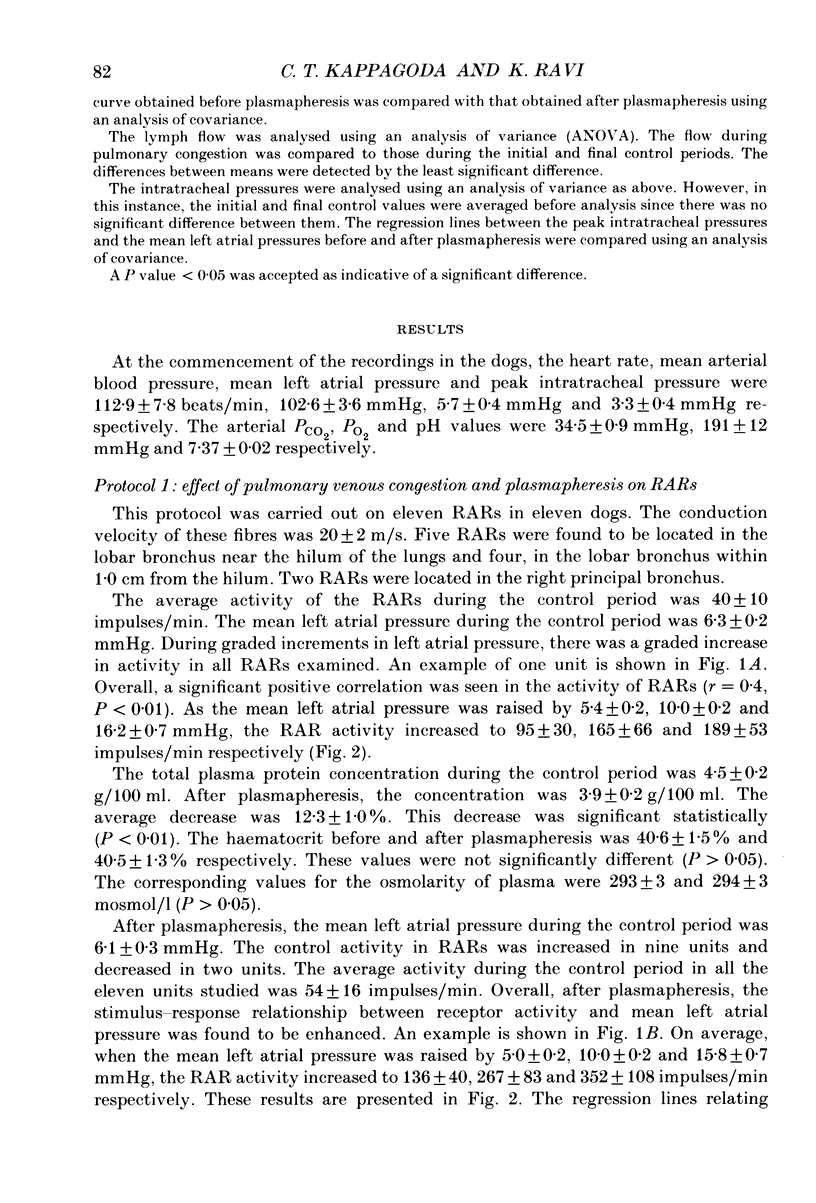
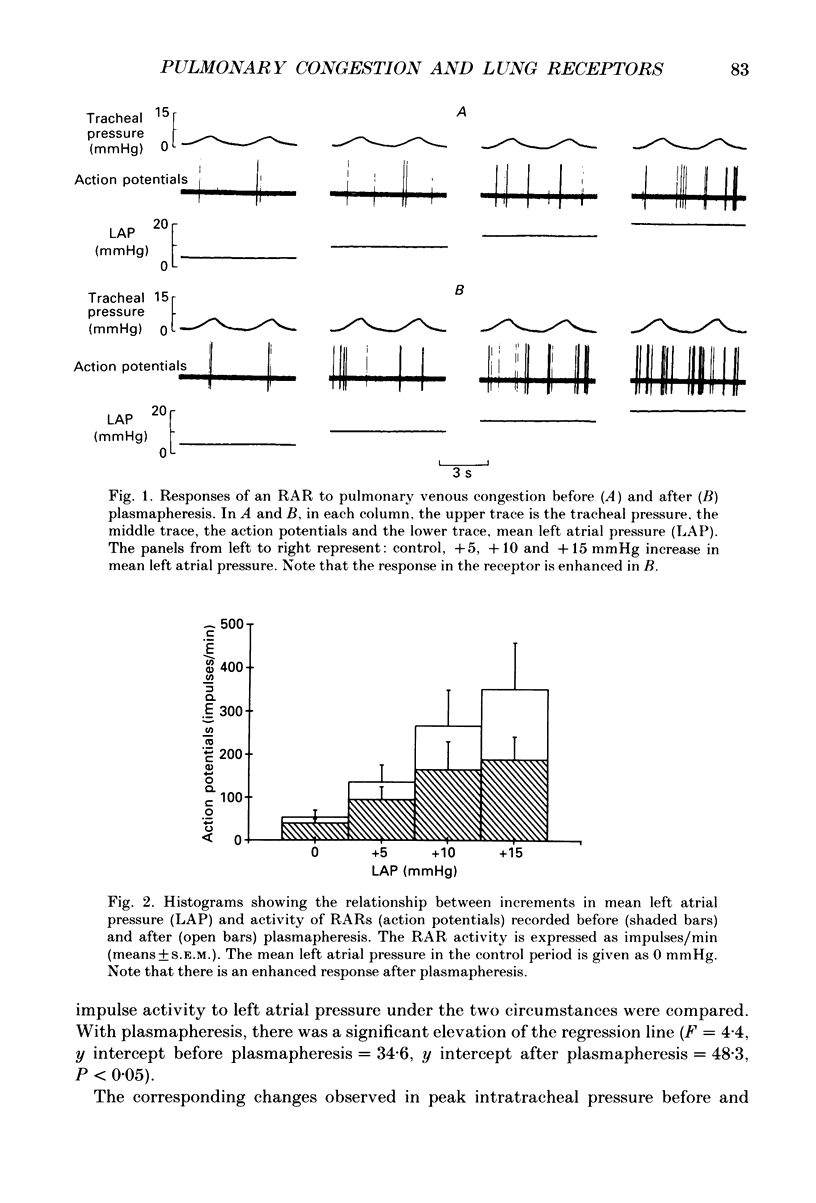
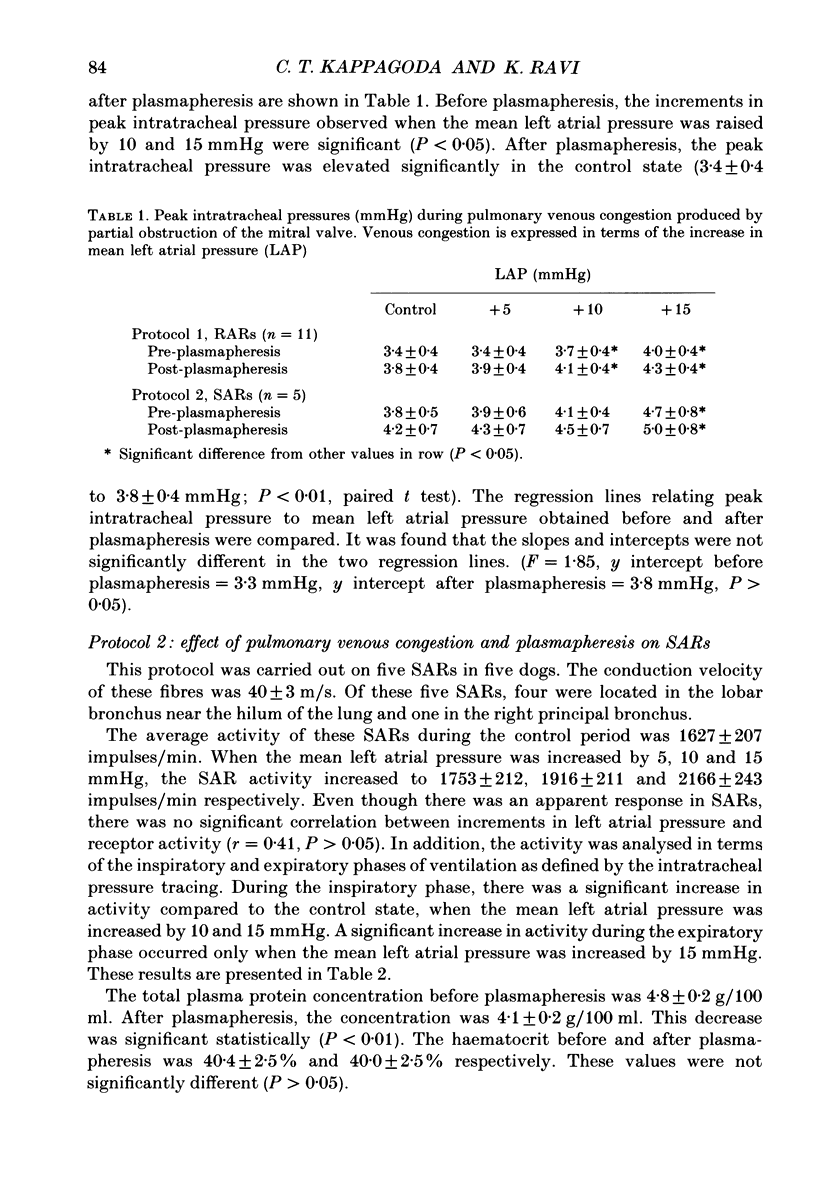
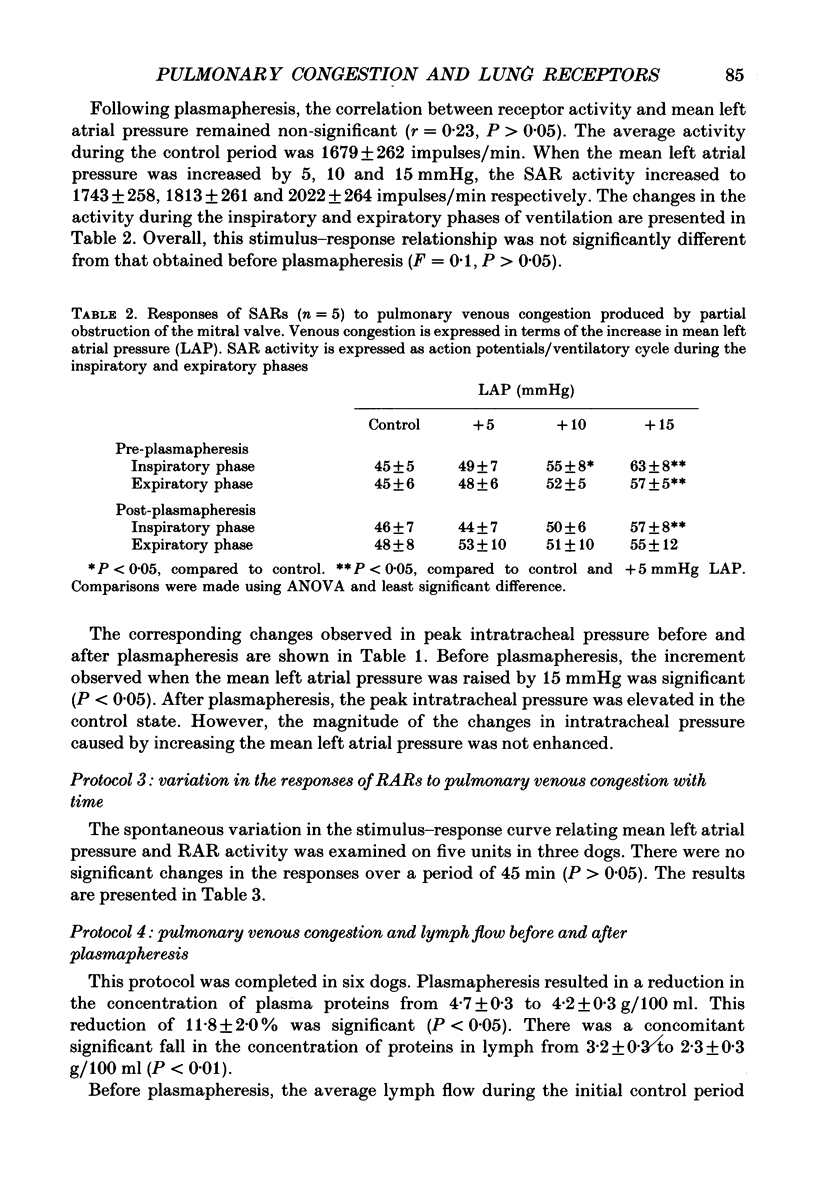
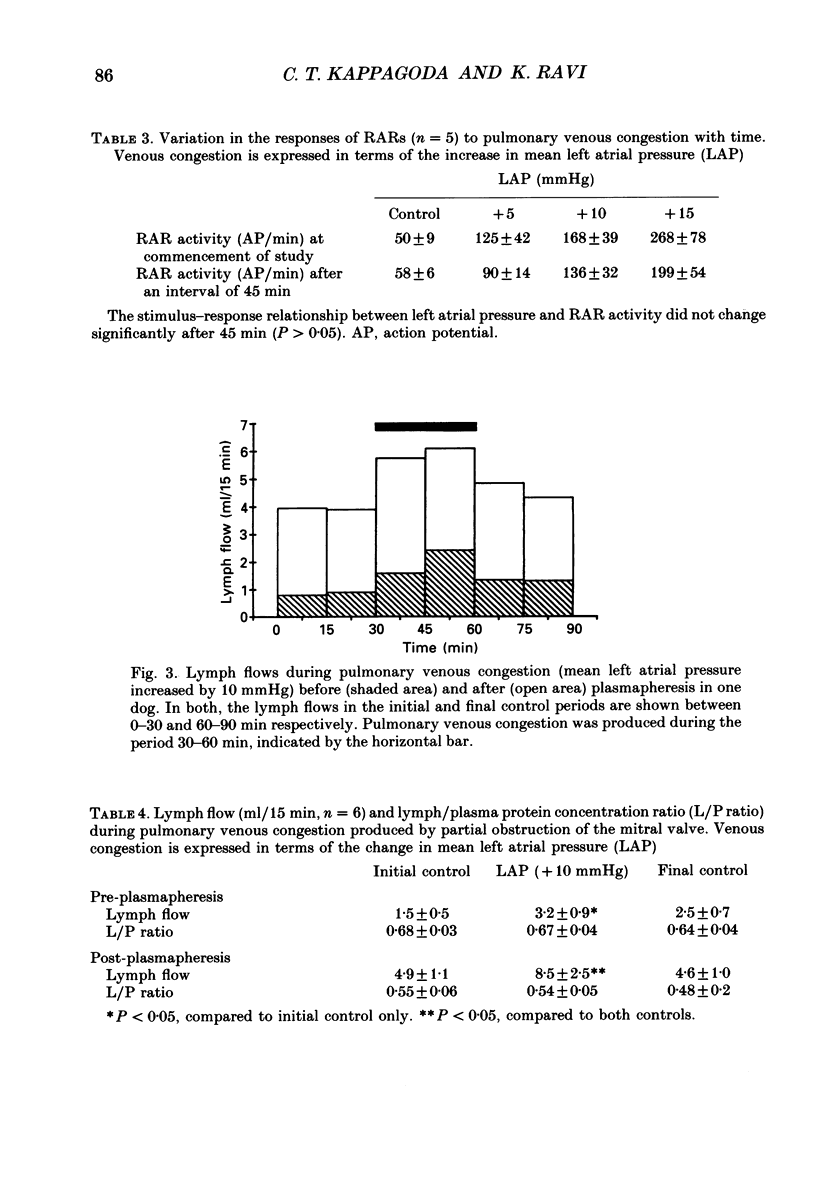
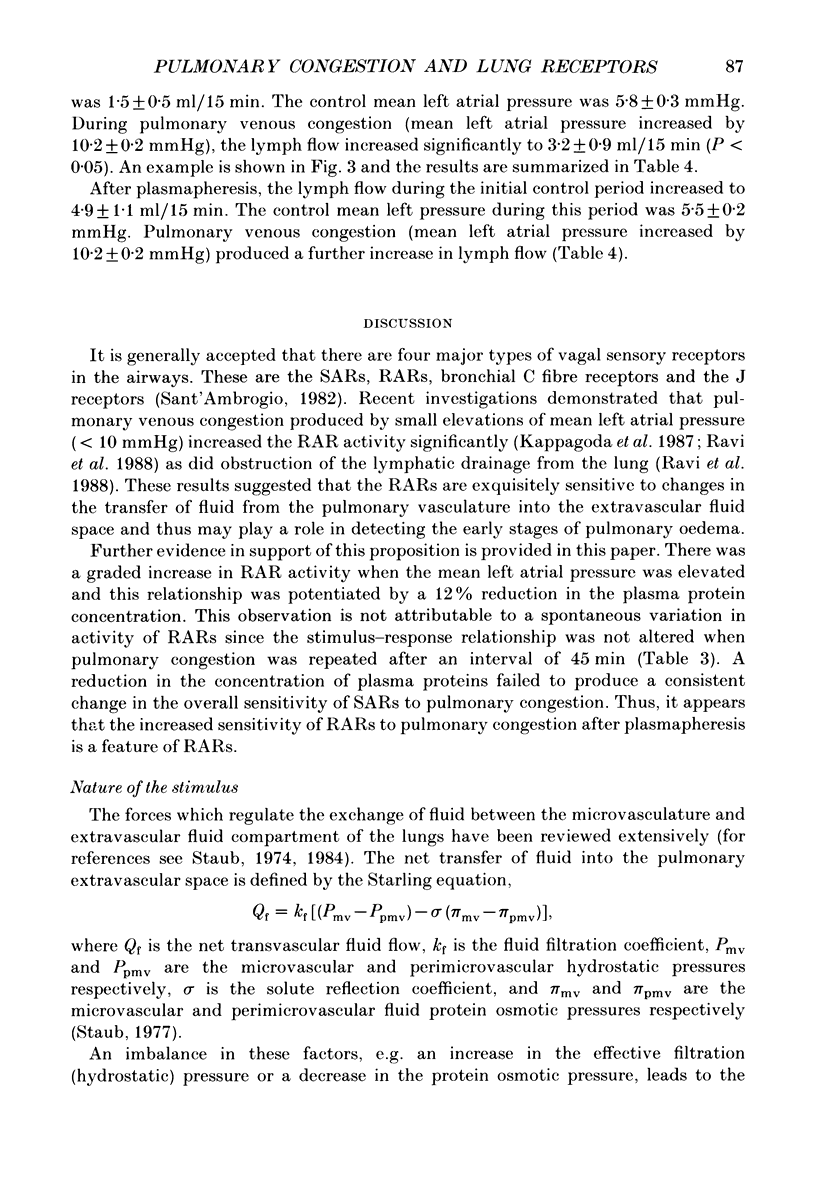
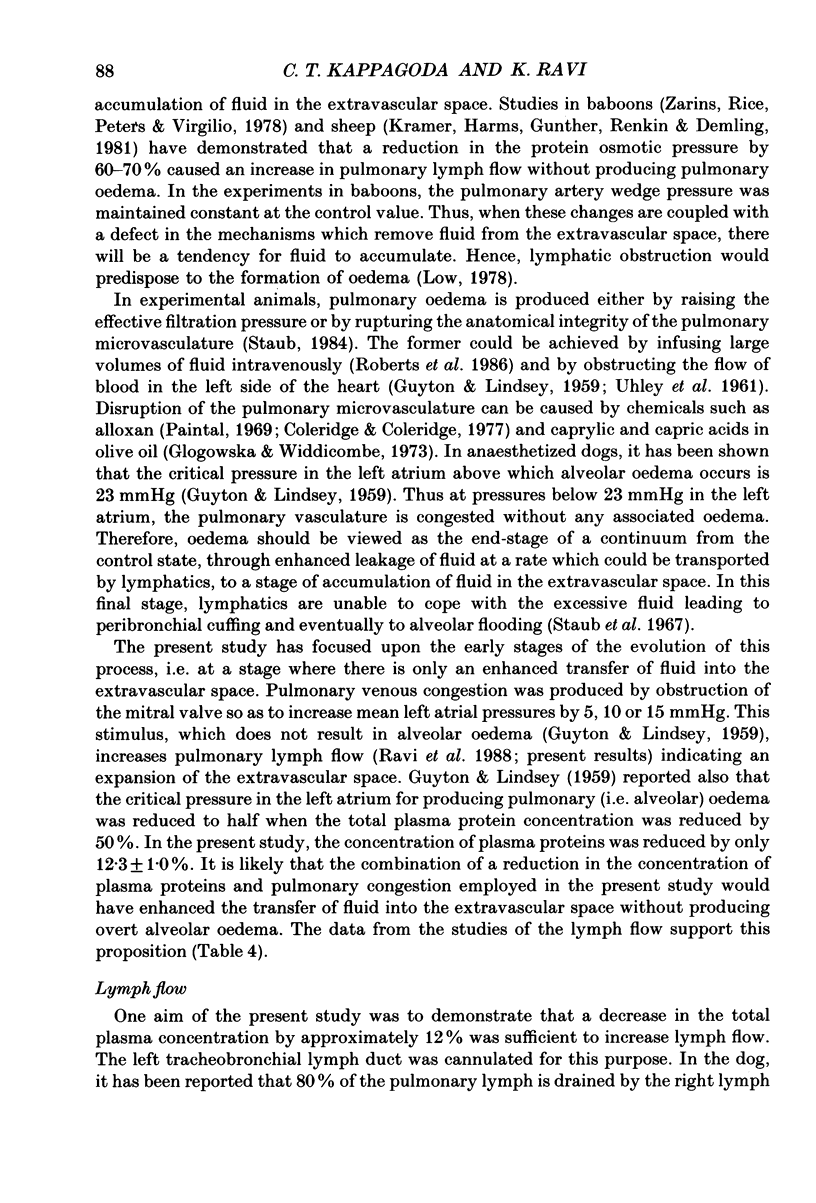
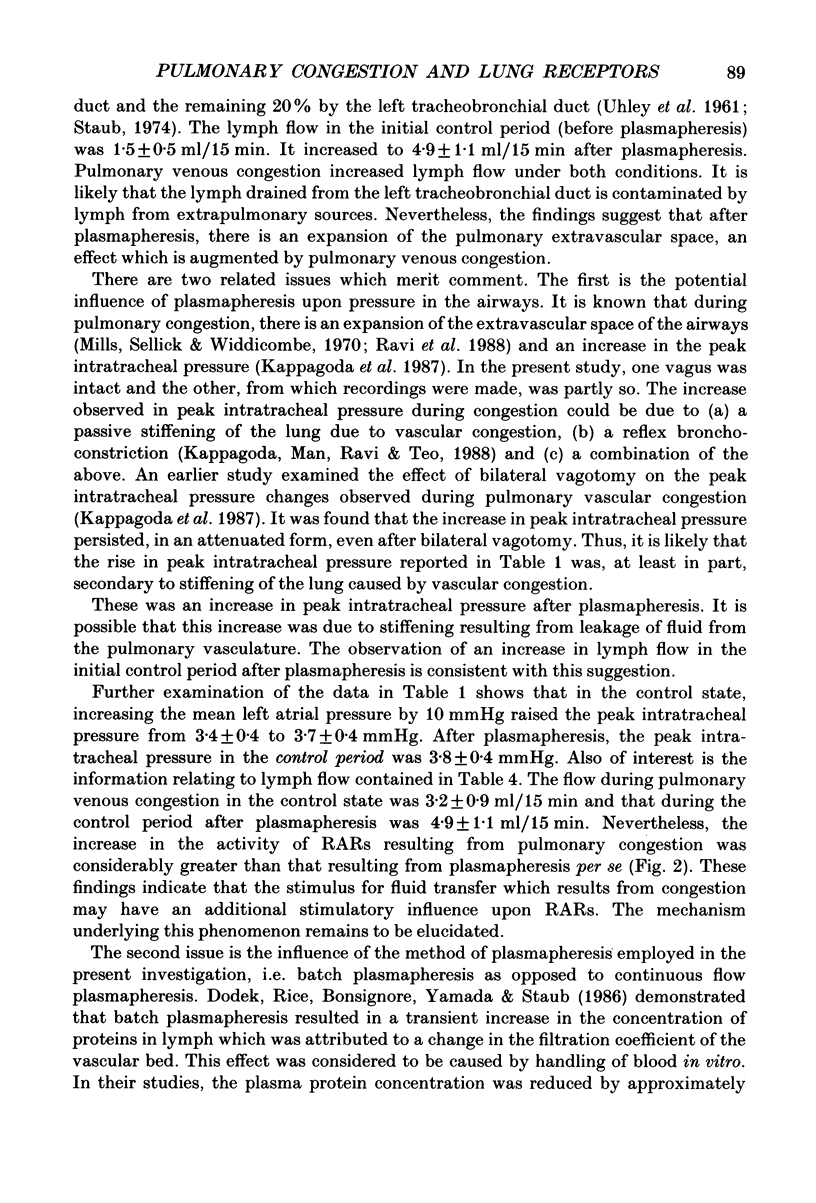
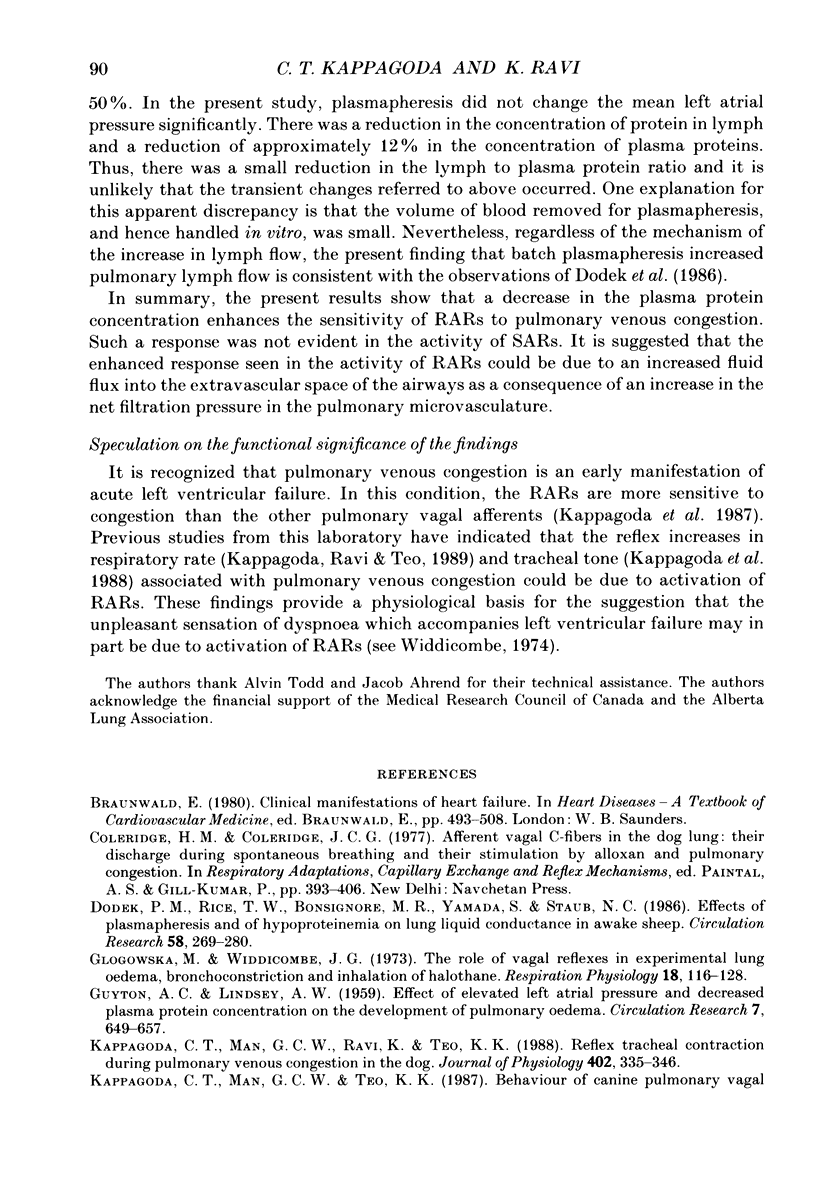
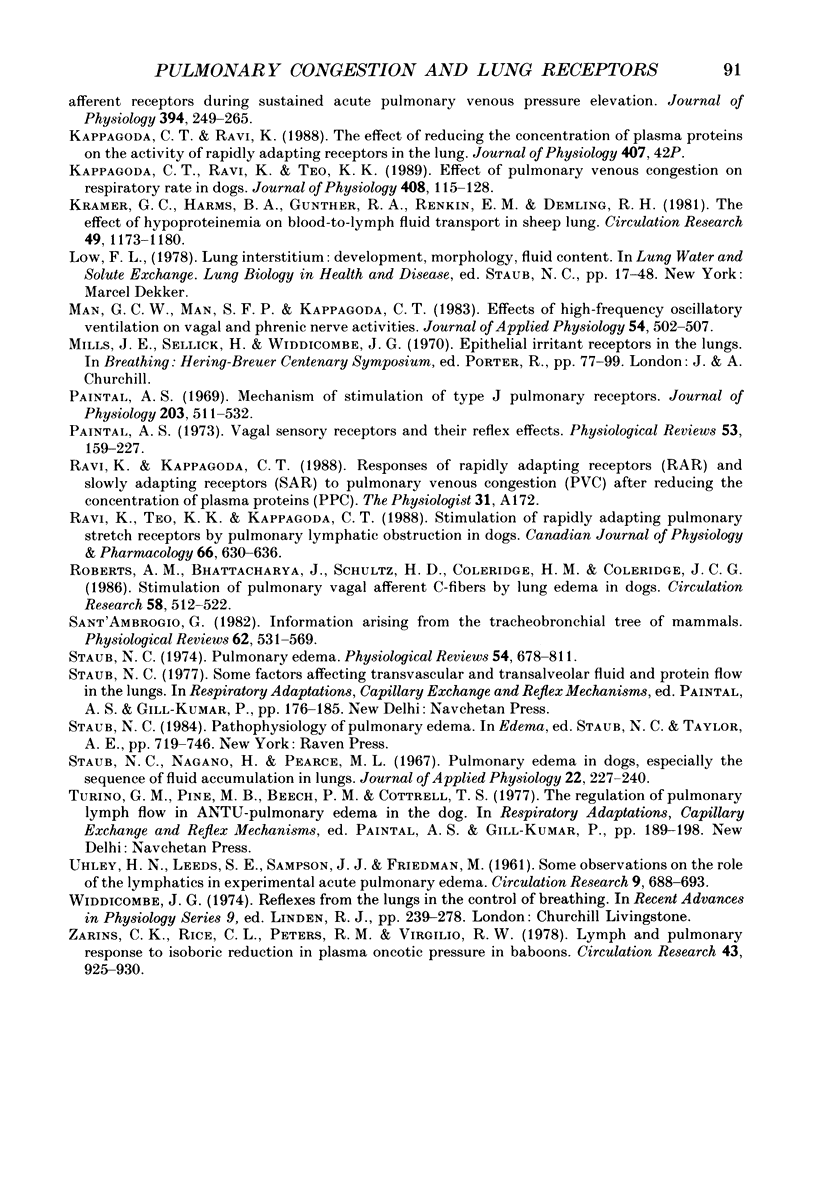
Selected References
These references are in PubMed. This may not be the complete list of references from this article.
- Dodek P. M., Rice T. W., Bonsignore M. R., Yamada S., Staub N. C. Effects of plasmapheresis and of hypoproteinemia on lung liquid conductance in awake sheep. Circ Res. 1986 Feb;58(2):269–280. doi: 10.1161/01.res.58.2.269. [DOI] [PubMed] [Google Scholar]
- GUYTON A. C., LINDSEY A. W. Effect of elevated left atrial pressure and decreased plasma protein concentration on the development of pulmonary edema. Circ Res. 1959 Jul;7(4):649–657. doi: 10.1161/01.res.7.4.649. [DOI] [PubMed] [Google Scholar]
- Glogowska M., Widdicombe J. G. The role of vagal reflexes in experimental lung oedema, bronchoconstriction and inhalation of halothane. Respir Physiol. 1973 Jun;18(1):116–128. doi: 10.1016/0034-5687(73)90027-3. [DOI] [PubMed] [Google Scholar]
- Kappagoda C. T., Man G. C., Ravi K., Teo K. K. Reflex tracheal contraction during pulmonary venous congestion in the dog. J Physiol. 1988 Aug;402:335–346. doi: 10.1113/jphysiol.1988.sp017207. [DOI] [PMC free article] [PubMed] [Google Scholar]
- Kappagoda C. T., Man G. C., Teo K. K. Behaviour of canine pulmonary vagal afferent receptors during sustained acute pulmonary venous pressure elevation. J Physiol. 1987 Dec;394:249–265. doi: 10.1113/jphysiol.1987.sp016869. [DOI] [PMC free article] [PubMed] [Google Scholar]
- Kappagoda C. T., Ravi K., Teo K. K. Effect of pulmonary venous congestion on respiratory rate in dogs. J Physiol. 1989 Jan;408:115–128. doi: 10.1113/jphysiol.1989.sp017450. [DOI] [PMC free article] [PubMed] [Google Scholar]
- Kramer G. C., Harms B. A., Gunther R. A., Renkin E. M., Demling R. H. The effects of hypoproteinemia on blood-to-lymph fluid transport in sheep lung. Circ Res. 1981 Nov;49(5):1173–1180. doi: 10.1161/01.res.49.5.1173. [DOI] [PubMed] [Google Scholar]
- Man G. C., Man S. F., Kappagoda C. T. Effects of high-frequency oscillatory ventilation on vagal and phrenic nerve activities. J Appl Physiol Respir Environ Exerc Physiol. 1983 Feb;54(2):502–507. doi: 10.1152/jappl.1983.54.2.502. [DOI] [PubMed] [Google Scholar]
- Paintal A. S. Mechanism of stimulation of type J pulmonary receptors. J Physiol. 1969 Aug;203(3):511–532. doi: 10.1113/jphysiol.1969.sp008877. [DOI] [PMC free article] [PubMed] [Google Scholar]
- Paintal A. S. Vagal sensory receptors and their reflex effects. Physiol Rev. 1973 Jan;53(1):159–227. doi: 10.1152/physrev.1973.53.1.159. [DOI] [PubMed] [Google Scholar]
- Ravi K., Teo K. K., Kappagoda C. T. Stimulation of rapidly adapting pulmonary stretch receptors by pulmonary lymphatic obstruction in dogs. Can J Physiol Pharmacol. 1988 May;66(5):630–636. doi: 10.1139/y88-098. [DOI] [PubMed] [Google Scholar]
- Roberts A. M., Bhattacharya J., Schultz H. D., Coleridge H. M., Coleridge J. C. Stimulation of pulmonary vagal afferent C-fibers by lung edema in dogs. Circ Res. 1986 Apr;58(4):512–522. doi: 10.1161/01.res.58.4.512. [DOI] [PubMed] [Google Scholar]
- Sant'Ambrogio G. Information arising from the tracheobronchial tree of mammals. Physiol Rev. 1982 Apr;62(2):531–569. doi: 10.1152/physrev.1982.62.2.531. [DOI] [PubMed] [Google Scholar]
- Staub N. C., Nagano H., Pearce M. L. Pulmonary edema in dogs, especially the sequence of fluid accumulation in lungs. J Appl Physiol. 1967 Feb;22(2):227–240. doi: 10.1152/jappl.1967.22.2.227. [DOI] [PubMed] [Google Scholar]
- Staub N. C. Pulmonary edema. Physiol Rev. 1974 Jul;54(3):678–811. doi: 10.1152/physrev.1974.54.3.678. [DOI] [PubMed] [Google Scholar]
- UHLEY H., LEEDS S. E., SAMPSON J. J., FRIEDMAN M. Some observations on the role of the lymphatics in experimental acute pulmonary edema. Circ Res. 1961 May;9:688–693. doi: 10.1161/01.res.9.3.688. [DOI] [PubMed] [Google Scholar]
- Zarins C. K., Rice C. L., Peters R. M., Virgilio R. W. Lymph and pulmonary response to isobaric reduction in plasma oncotic pressure in baboons. Circ Res. 1978 Dec;43(6):925–930. doi: 10.1161/01.res.43.6.925. [DOI] [PubMed] [Google Scholar]


